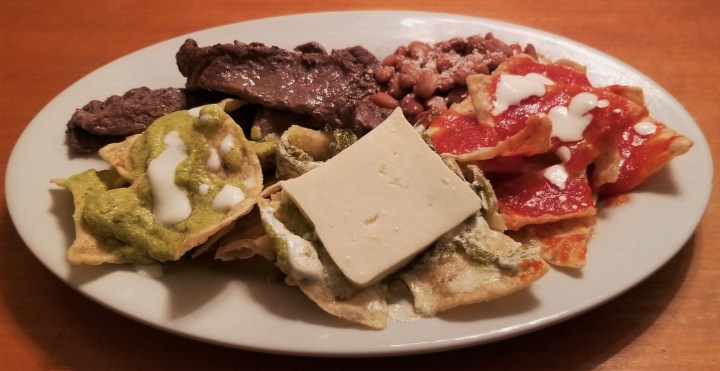
Go to printable recipe: Tricolour Chilaquiles
There are always opportunities to honour Mexico’s national colours in the kitchen, because green, white and red are natural food colours. What could be better to celebrate my post #300 than with a platter of “Chilaquiles Bandera” (Flag Chilaquiles), a grandiose example of green, white and red food, which I tried at “Los Chilaquiles” restaurant (680 Neptuno St., Guadalajara, Jalisco).
The restaurant’s décor – starting with their name and sign, and following from the two-story-high ceiling all the way to the tiled floor – proudly identifies its Mexican ethnicity:


Accordingly, their menu was filled with all sorts of emblematic breakfast and lunch Mexican items. I started with a mug of hot atole champurrado (chocolate corn-based beverage):
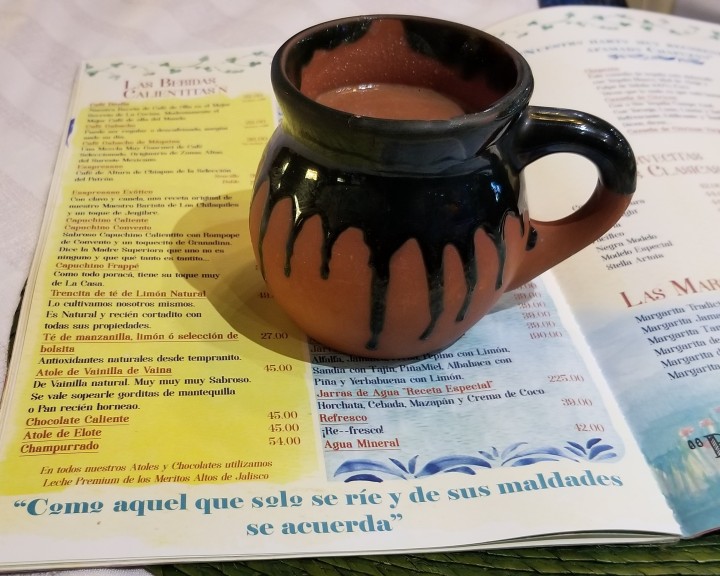
I then proceeded to study the food offerings; as the name implies, chilaquiles are the house specialty, and an entire page was dedicated to describe many different renditions of the dish:
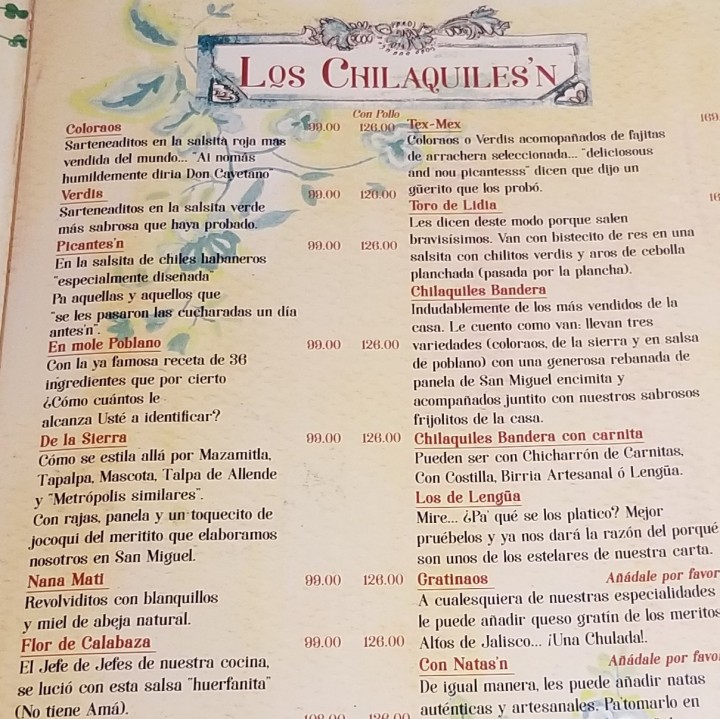
I was tempted by several of them, but I settled for one of their best sellers, Chilaquiles Bandera (Flag Chilaquiles) with arrachera (hanger steak strips) and frijoles de la olla (beans from the pot); this choice allowed me to try three different flavours in a single order: “En Salsa de Poblano” – “In poblano sauce”, bright green and creamy; “De la sierra” – “From the Hills”, with poblano pepper strips in jocoque (Mexican fermented milk product); and “Coloraos” – colloquialism meaning “Red Coloured”, the house spicy red sauce:
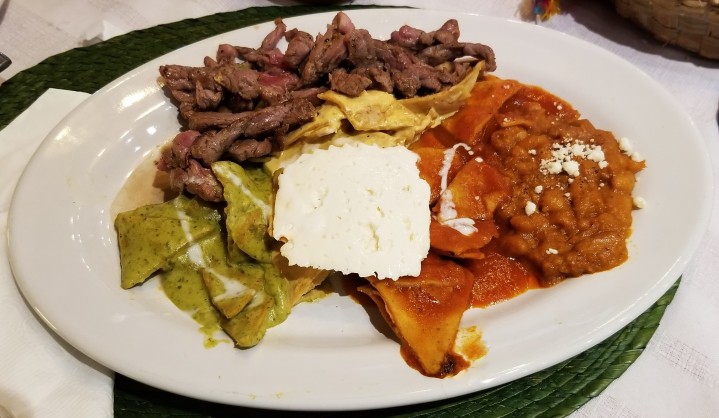
What a feast I had! The rest of my party enjoyed different iterations of this delicious formula, from vegetarian “Flor de Calabaza” (in pumpkin flower sauce) to meat-lover’s “Los de Lengua” (with beef tongue!) I must thank my niece and her husband for generously treating us to this hearty and (very!) filling brunch. Luckily, to appease my guilt, that morning we had gone for a healthy stroll along Ignacio L. Vallarta, and other main avenues, which are closed to motor vehicle traffic on Sundays, in Guadalajara:
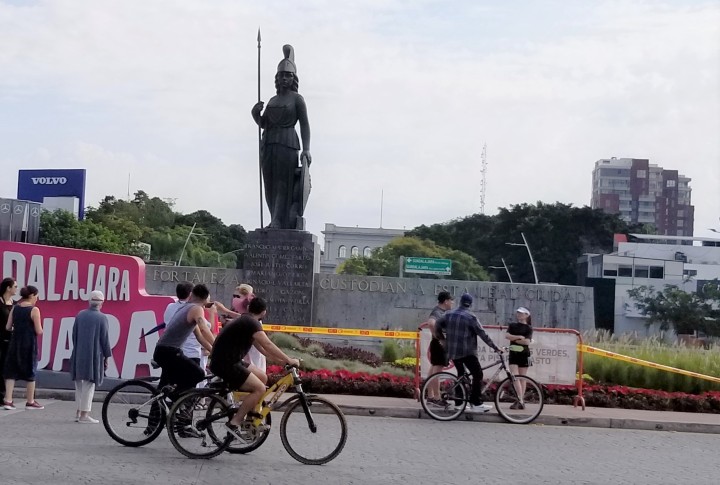
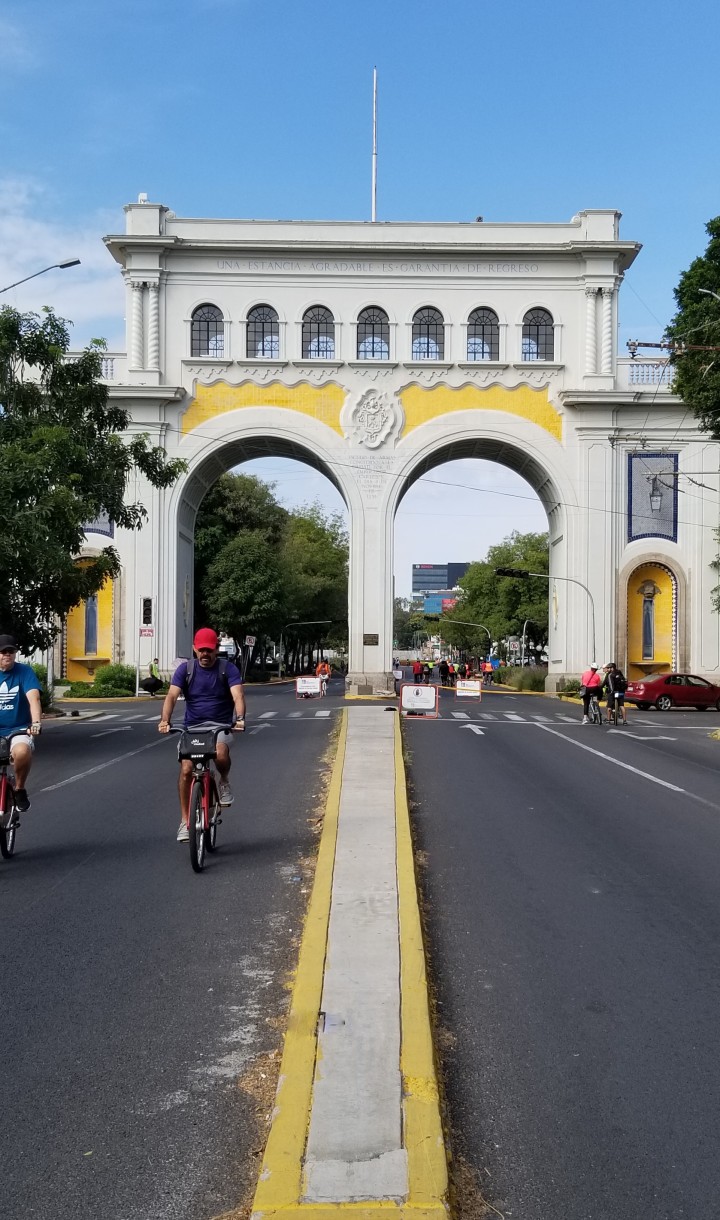
I have previously talked about the history and different styles of chilaquiles (please click here to visit that post), which in their most basic form are simply a mix of crisped tortillas and any Mexican sauce. The tortilla chips may be made at home, either brushed with oil and baked, or deep fried (click here to visit my post “This is How the Tortilla Chip Crumbles”), and even a bag of good quality restaurant style tortilla chips will do in a pinch for this recipe. There are three sauces in this case, in green, white and red tones, to honour Mexico’s flag. Keep it vegetarian with a side of beans (frijoles de la olla) or add grilled hanger steak strips (arrachera), both optional, but very tasty protein boosts.
Tricolour Chilaquiles – Chilaquiles Tricolor
Printable recipe: Tricolour Chilaquiles
Ingredients (for four portions)
8 cups tortilla chips (homemade or restaurant style)
Coloraos (Red Sauce):
2 large tomatoes; stem end removed, cut into chunks
1 small onion (about 1/2 cup); peeled and cut into chunks
1-2 cloves garlic; peeled
1 fresh red hot pepper, or to taste (such as de árbol, Thai hot, Habanero, etc.) or dry and rehydrated in 1/4 cup boiling water; stems removed
½ tsp salt, or to taste
1 tbsp vegetable oil
2 tbsp tomato paste
De la Sierra (White Sauce):
2 poblano peppers; roasted, peeled, stems and seeds removed and cut into strips*
½ small onion; peeled and sliced thinly
1 tbsp vegetable oil
1 ½ cups Mexican jocoque** (or 1 cup plain yogurt mixed with ½ cup sour cream)
½ tsp salt, or to taste
De Poblano (Green Sauce):
2 poblano peppers; roasted, peeled, stems and seeds removed and cut into strips*
1 cup Mexican cream*** (or ¾ cup sour cream and 6 tbsp milk)
½ tsp salt, or to taste
Toppings and Sides:
1 lb arrachera**** steak (hanger steak, or flank or sirloin); cut into strips
1 tbsp oil
Salt and pepper, to taste
2 cups cooked beans with broth (click here for my recipe for frijoles de la olla, or canned)
¼ cup Mexican cream***(or ¼ cup sour cream and 2 tbsp milk)
4 slices soft unripened cheese (such as panela or unripened Halal cheese†)
¼ cup shredded cheese (such as cotija‡ or parmesan)
Keep beans simmering in a pot over low heat until serving time.
For red sauce (Detailed instructions and photos in my previous post): Place tomato and onion chunks, garlic, de-stemmed hot peppers (including water used for soaking if from dry), and salt in a blender jar and process until smooth. In a sauce pan, warm up oil over medium heat. Pour blended mix; it should sizzle as it touches the hot oil. Add tomato paste and stir to dissolve. Continue simmering to thicken the sauce, about 20 minutes. Adjust seasoning with more salt, as needed. Notice the change in colour with the addition of tomato paste (trully colorao!) This also provides an extra punch of flavour and a better developed seasoning.
For white sauce: While red sauce is simmering, warm up oil in a pan and sauté onions until translucent (photo below, left); add pepper strips and continue cooking for another minute. Add jocoque (or yogurt/cream mix, photo below, right):
Stir to incorporate all ingredients, bring to a gentle boil, then reduce to a simmer and keep warm until serving time.
For green sauce: Place all ingredients in a blender jar:
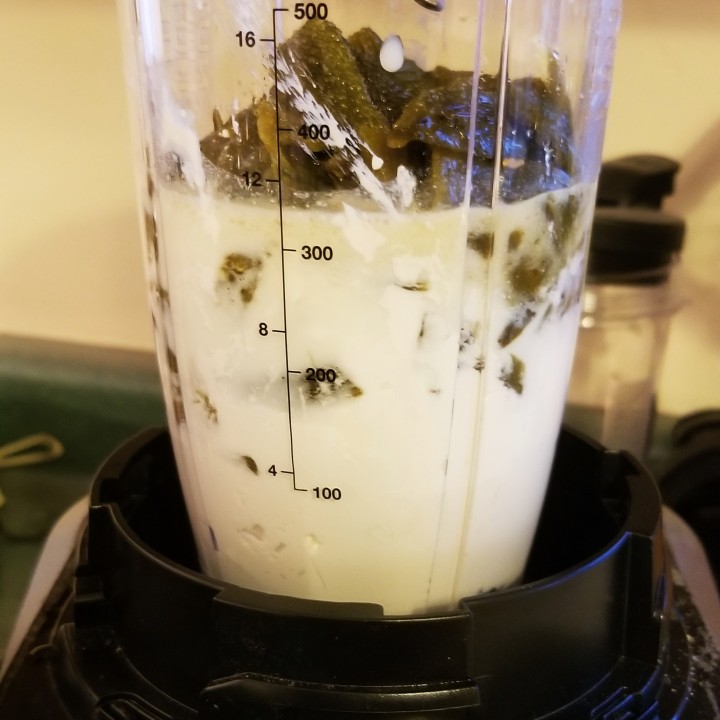
Process until smooth. Pour in a pan and bring to boil over medium heat; reduce to a simmer and keep warm until serving time.
Steak strips: Right before serving, warm up oil in a skillet over medium/high heat. Add meat and cook to taste, seasoning with salt and pepper.
At this point, my stove top was working to its full capacity, as seen below, clockwise from upper left corner: simmering pots of poblano sauce, red spicy sauce, beans, and white jocoque sauce, and steak strips cooking:
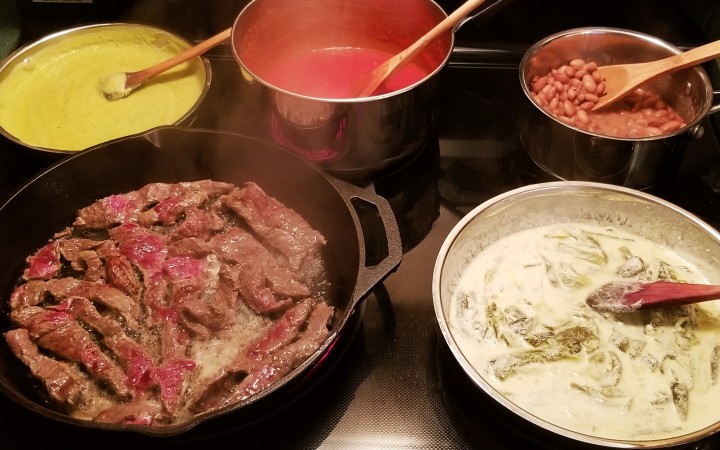
To plate: Arrange 2 cups of tortilla chips along the bottom half of a large plate. On the top half, place one quarter of the steak strips, and a scoop of beans; sprinkle beans with shredded cheese. Pour the sauces, each coating one third of the chips, from left to right: green poblano, white jocoque and spicy red, to form Mexico’s flag vertical bands. Sprinkle cream over green and red sauces, and top centre with a slice of unripened cheese:
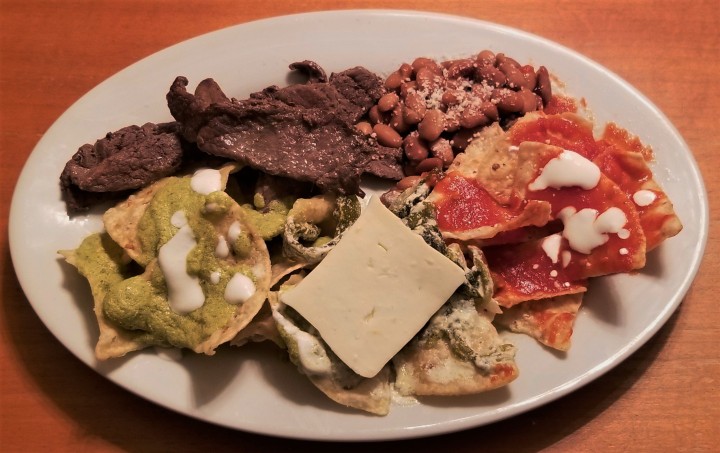
I think my platter (also pictured at the top of this post) was very close to the restaurant version, and even my one daughter who usually does not like chilaquiles, enjoyed her portion. Hurray!
NOTES ABOUT INGREDIENTS IN THIS POST:
* Click here for detailed instructions on how to prepare roasted poblano strips. It might be difficult to find poblano peppers outside of Mexico, especially during the winter months; Anaheim peppers (prepared similarly) may be used instead:
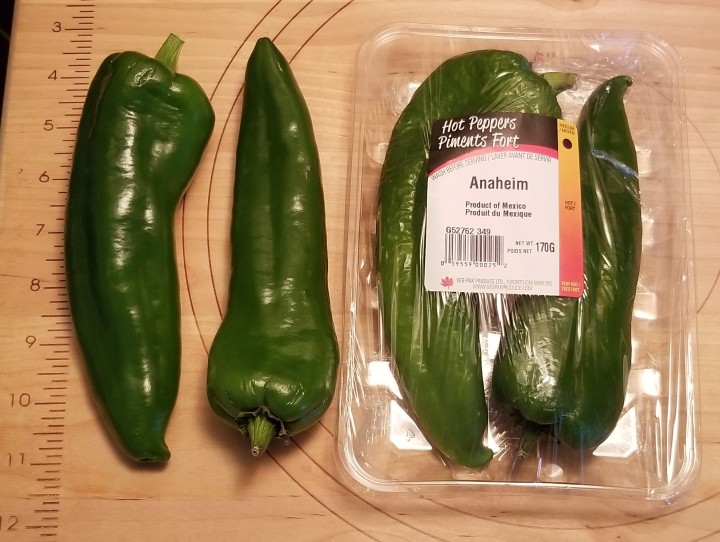
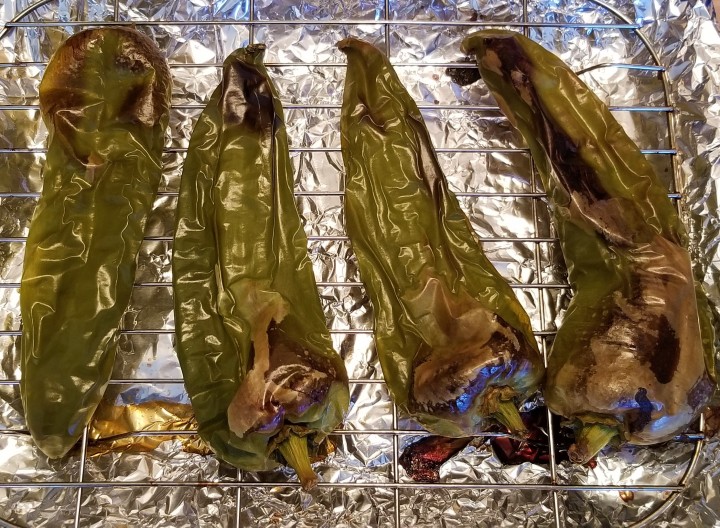
As a last resource, canned roasted poblanos work well enough in this recipe:
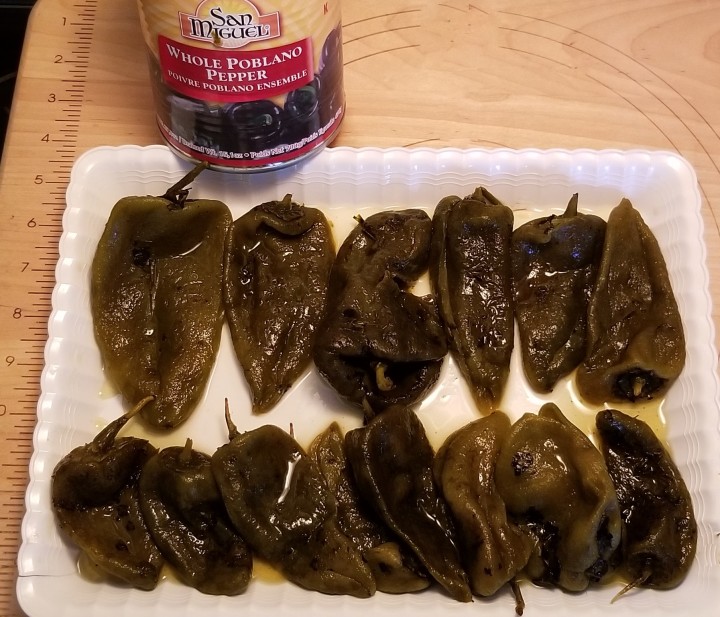
** Jocoque is a dairy product from the process of fermentation of whole milk; similar to quark (or buttermilk, but thicker), jocoque has a pleasant acidic taste and a creamy texture:
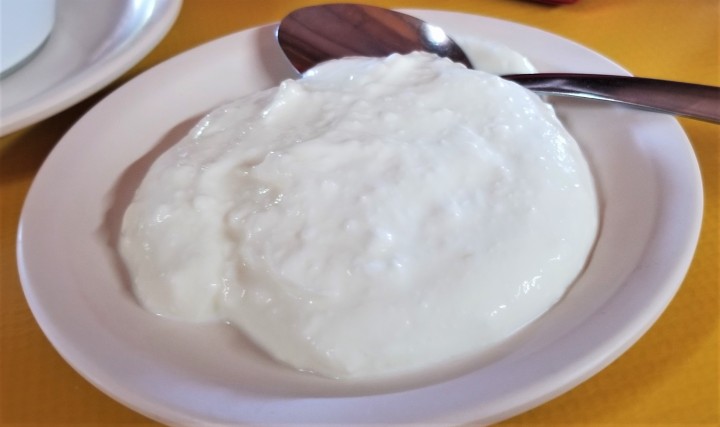
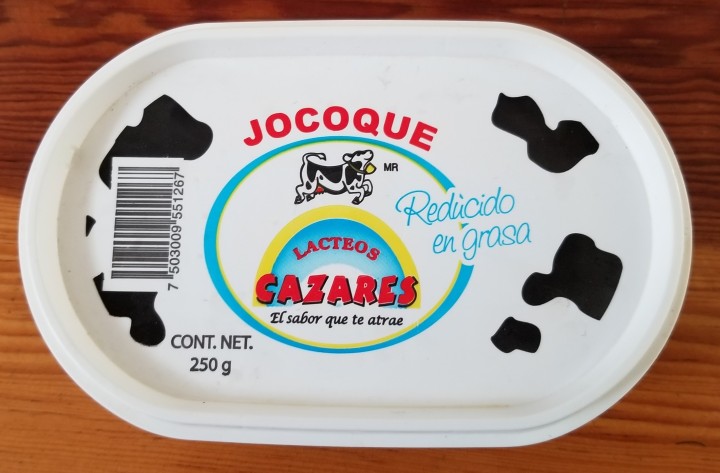
It is hard to find jocoque outside Mexico, but for cooking, a 2:1 mixture of plain yogurt and sour cream is a good enough substitute (buttermilk might be closer in flavour, but way too runny.) Soft quark and fromage blanc are similar products, and also good substitutes.
*** Mexican cream is slightly acidic and lose enough to be poured over soups, tacos and other dishes. Diluting sour cream with a little milk is a good substitute.
**** Arrachera is the Mexican name for hanger steak, a beef cut from the plate (upper belly area) of the animal. It is a very tender cut, somewhat similar to flank. I could not find either, so I used top sirloin in this post.
† Panela is the most common unripened Mexican cheese; it is soft and has a high moisture content. A nice substitute I find in Canada is soft unripened Halal cheese:
‡ Cotija is the classic choice of cheese for sprinkling over Mexican dishes; I found it already shredded and packaged in a Hispanic store in Toronto:
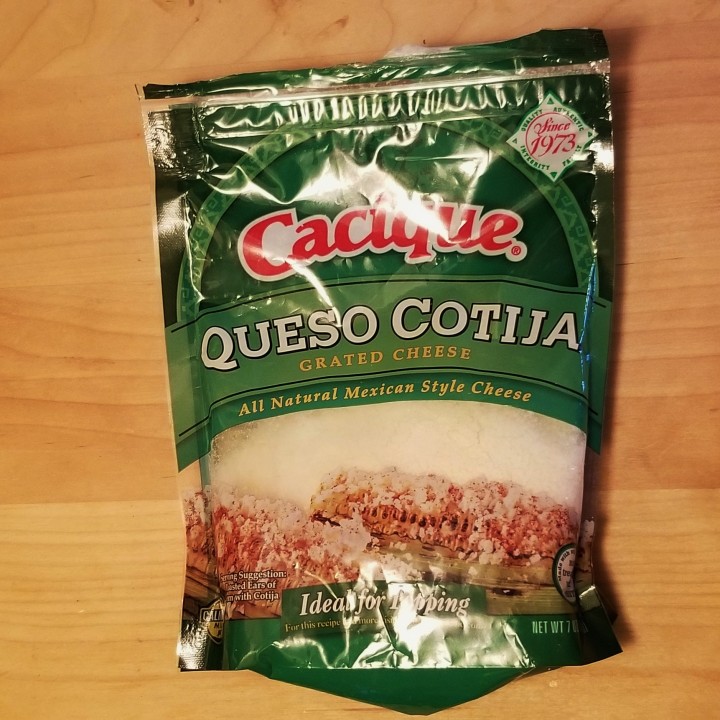
When not available, finely shredded parmesan is surprisingly a great substitute. Light Canadian feta, shredded very finely may also be used.
I am sharing my recipe at What’s for Dinner? Sunday Link-Up #237 with Helen @ The Lazy Gastronome.
I am bringing my recipe at Over the Moon #209, graciously hosted by Bev @ Eclectic Red Barn, and Marilyn @ Marilyn’s Treats. Special thanks to Bev for featuring my Mexican Sorbet at this party.
I am also joining Classy Flamingos Blog Party #87 with Linda @ poinsettiadr.com. Special thanks to Linda for featuring my Esquites at this party.

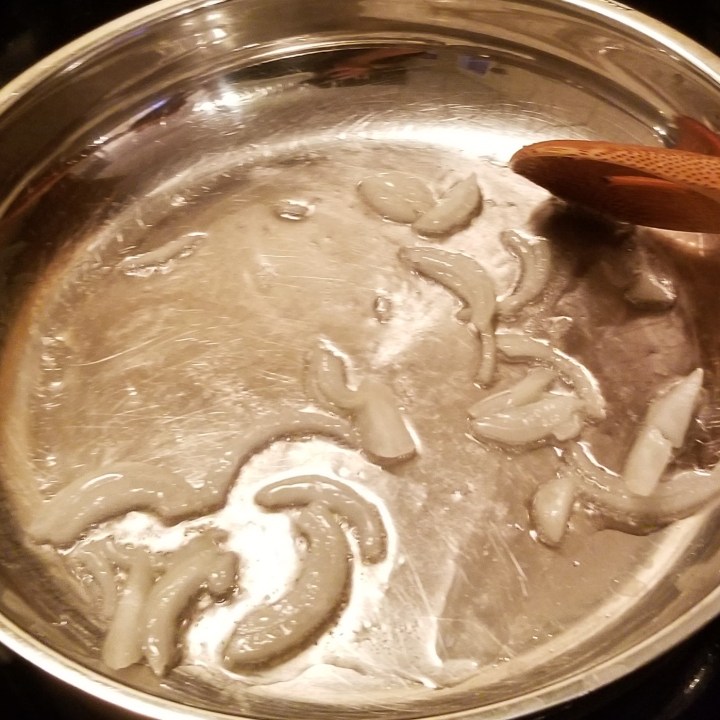
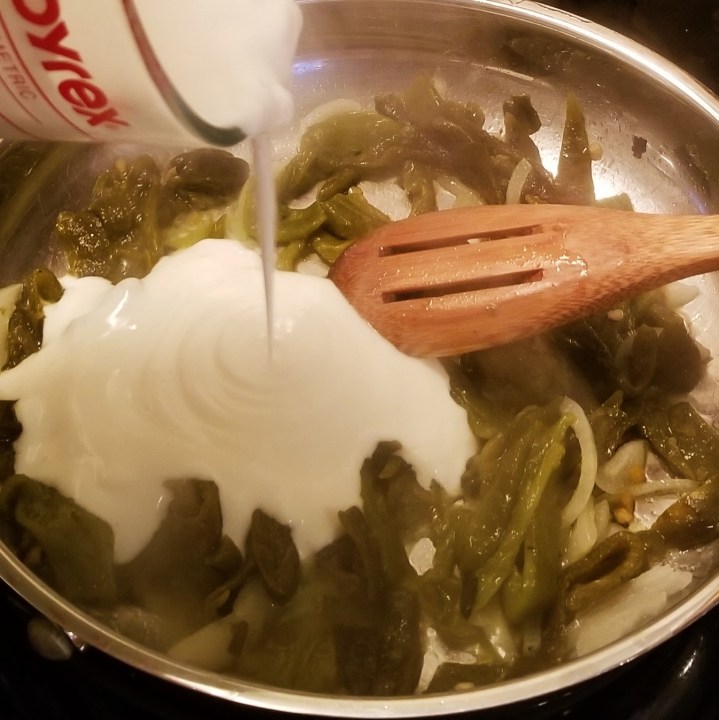
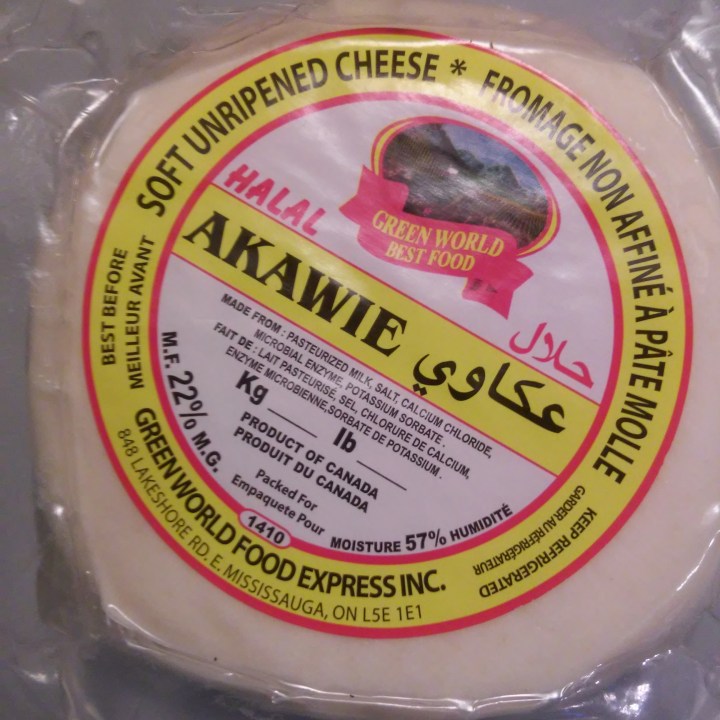
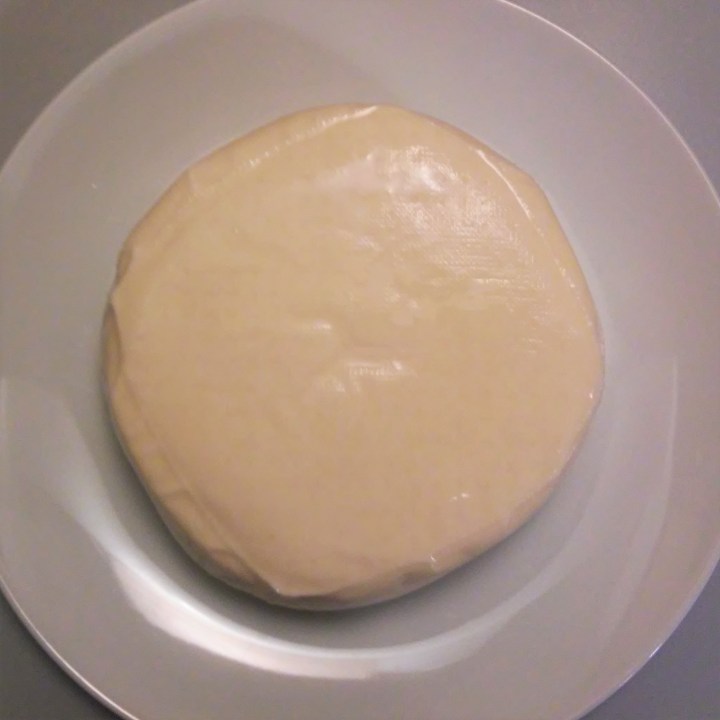







Hi Irene, This was a wonderful blog! So much info. See you tomorrow. Anya xxxxxxx
LikeLiked by 1 person
Glad you liked it! Hugs, see you tomorrow!
LikeLike
Congratulations on your 300th post, Irene.
LikeLike
Thank you, Punam!
LikeLiked by 1 person
You are welcome.
LikeLiked by 1 person
The recipe looks so good, and I love the idea of the streets being closed to motorized vehicles on Sundays!
LikeLiked by 1 person
I think your version looks just as tasty as the one at the restaurant. ¡Muchos colores y muchos sabores! Thank you for posting the photo of the menu. I knew that chilaquiles varied from region to region but I was surprised to see so many different variations.
LikeLike
Thank you for your kind comment, and I am glad the menu was of interest!
LikeLiked by 1 person
Good one, Irene. Great response to the prompt.
LikeLiked by 1 person
Thanks, Tracy!
LikeLiked by 1 person
I like your Article.its Amazing.it is very helpful and informative for me.
LikeLike
So glad you found it helpful, thank you for your kind comment!
LikeLike
Great detailed instructions! Thanks for sharing at the What’s for Dinner party. Have a great week!
LikeLike
Thank you, Helen, have a great week, too!
LikeLike
Thank you for sharing at #OverTheMoon. Pinned and shared. Have a lovely week. I hope to see you at next week’s party too!
LikeLike
Thank you Marilyn, and thank you for hosting!
LikeLike